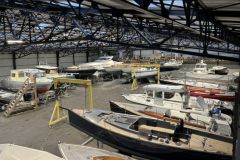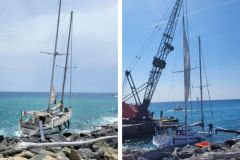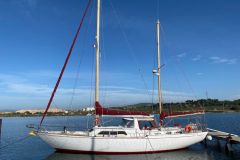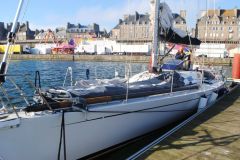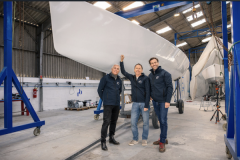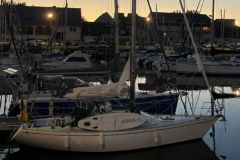Laminating angle irons in place
Matt wants to fix the port side bench of Duracell's doghouse. But the latter has to remain dismountable, so that the fuel tank can be unloaded if necessary. Composite angle irons must therefore be fitted around the perimeter, to which the seat will be bolted. While the front and rear bulkheads can be supported with conventional 90° angles, this is not the case for the longitudinal support, which does not have a right angle. Matt positions the waxed bench and temporarily holds it in place. He then laminates the angle iron directly into the boat. Once the resin has catalyzed, the wax will be used for demolding.
Adjusting and shimming parts
Matt then goes on to build the changing area in the starboard cabin, and takes the opportunity to demonstrate his shimming methods with the example of the shelf. After cutting a simple rectangle slightly too long, support blocks are glued in place and levelled with a laser level. The shelf is presented. To limit the need for epoxy filling, Matt adjusts the rectangle to the shape of the shell. To do this, he traces the hull shape offset on the shelf, using a small wedge. He can then refine the cut with a cutter.
With this first marker in place, he can assemble the rest of the furniture.
Matt then takes the templates for the port exchange area and cuts out the starboard ones. A little fine-tuning is required, but by the end of the episode, the two symmetrical cabins now have all their bulkheads positioned, revealing part of Duracell's future appearance.



